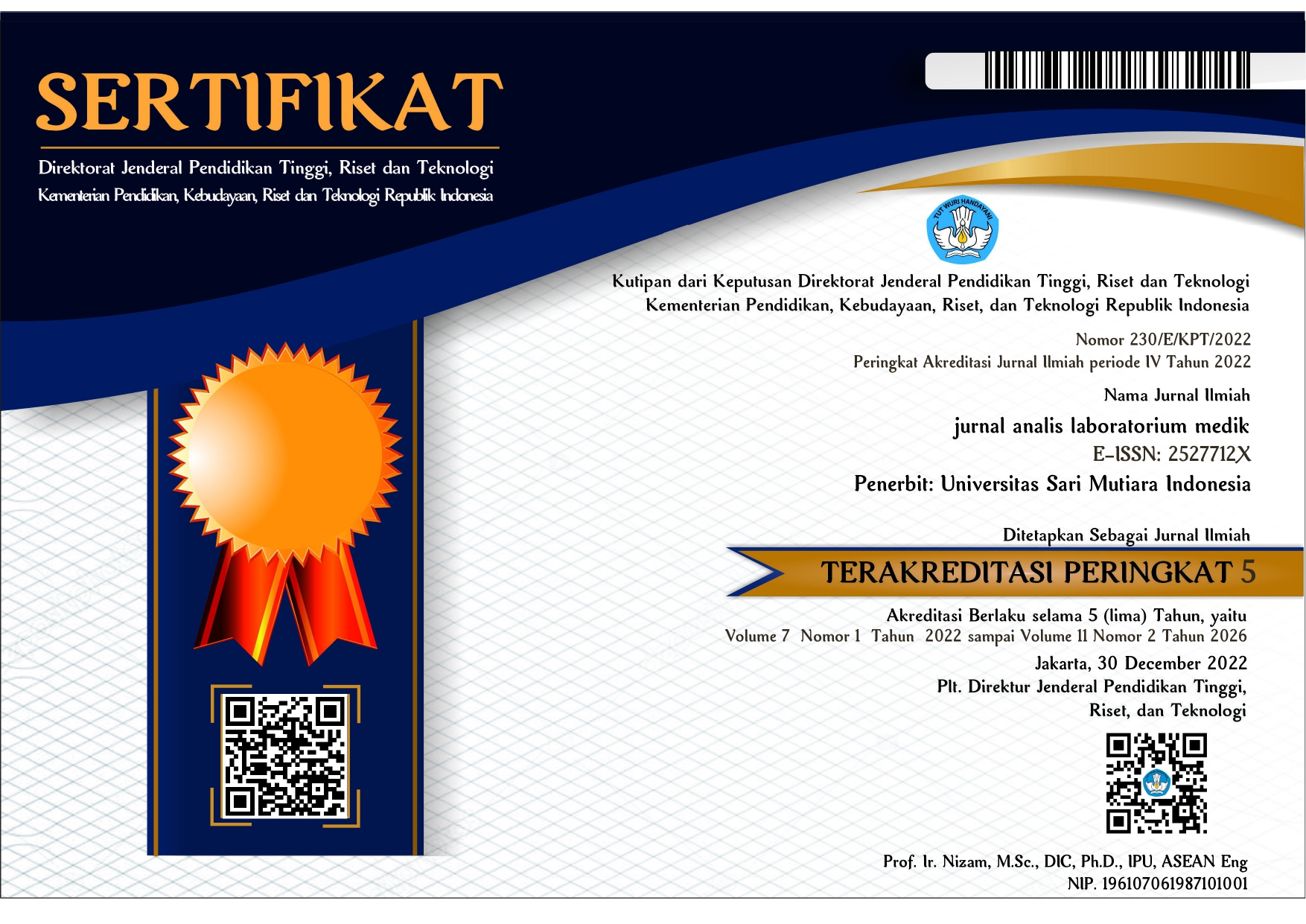AKTIVITAS BAKTERI FILOSFER DAUN REUNDEU (Staurogyne longata) SEBAGAI PENGHASIL SENYAWA ANTIMIKROB POTENSIAL
Keywords:
antimikrob, bakteri filosfer, reundeuAbstract
Di alam ini banyak sekali mikrob patogen yang menimbulkan penyakit pada manusia, contohnya seperti enteropatogenik Escherichia coli (EPEC) (Kaufmann et al. 2006), Staphylococcus aureus (Salle 1961), Candida tropicalis (Minagi et al. 1985), dan Candida albicans (Jang 2006). Untuk menanggulanginya diperlukan senyawa antimikrob yang dapat menghambat pertumbuhan mikrob tersebut. Reundeu (Staurogyne longata) merupakan salah satu tanaman yang daunnya dikonsumsi sebagai lalapan. Permukaan daun digunakan sebagai tempat hidup bagi mikroflora tertentu termasuk bakteri filosfer. Penelitian ini dilaksanakan untuk mengisolasi bakteri filosfer dari daun reundeu yang berpotensi menghasilkan senyawa antimikrob. Metode yang telah dilakukan antara lain mengisolasi bakteri dari sampel daun utuh dengan metode cawan sebar (spread plate method). Setelah mendapatkan isolat murni, dilakukan uji Gram dan uji antimikrob untuk mengetahui senyawa antibakteri yang dihasilkannya. Penelitian ini juga menguji aktivitas patogen dengan menggunakan media agar darah. Setelah itu konsentrasi penghambatan ditentukan dengan metode MIC (minimum inhibitory concentration). Lalu bakteri diidentifikasi dengan analisis sekuensing dari amplikon gen pengkode 16s rRNA,, analisis bioinformatik dan pembuatan pohon filogenetik. Hasil penelitian menunjukkan bahwa terdapat 25 isolat bakteri filosfer reundeu yang menghasilkan senyawa antimikrob terhadap keempat bakteri patogen dengan spektrum berbeda-beda. Terdapat lima isolat yang mempunyai spektrum paling baik yaitu FR3, FR5, FR11, FR17 dan FR40. Kelima isolat tersebut mempunyai konsentrasi penghambatan yang berbeda-beda. Identifikasi secara genetik menunjukkan bahwa kelima isolat tersebut berkerabat dekat dengan spesies Klebsiella pneumoniae, Bacillus subtilis, Pseudomonas stutzeri, dan Bacillus sp.Downloads
References
Claverie JM, Notredame C. 2007. Bioinformatic for Dummies. 2nd Ed. Canada: Wiley Publishing, Inc.
Geornaras I, Holy Av. 2001. Antimicrobial susceptibilities of isolates of Staphylococcus aureus, Listeria species and Salmonella serotypes associated with poultry processing. Int J Food Microbiol 70: 29–35.
Hamilton-Miller JMT, Shah S. 2001. Identity and antibiotic susceptibility of enterobacterial flora of salad vegetables. Int J Antimic Agents 18: 81–83.
Hariana A. 2006. Tumbuhan Obat dan Khasiatnya. Jakarta: Niaga Swadaya.
Jang WS et al. 2006. Antifungal activity of synthetic peptide derived from halocidin, antimicrobial peptide from the tunicate, Halocynthia aurantium. Fed Europ Biochem Societ 580: 1490-1496.
Kasim E, Yulinery R, Hardiningsih R, Triana E, Napitupulu RNR. 2005. Daya anti Staphylococcus aureus dari fermentasi daun beberapa jenis tumbuhan obat. Biol Indones 3: 397-404.
Kaufmann M et al. 2006. Escherichia coli O157 and non-O157 Shiga Toxin–Producing Escherichia coli in Fecal Samples of Finished Pigs at Slaughter in Switzerland. J Food Protec 69: 260-266.
Lindow SE, Brandl M.T. 2003. Microbiology of the Phyllosphere. Apl Environl Microbiol. 69 (4):1875-1883.
Madigan MT, Martinko J.M., Parker J. 2000. Brock Biology of Microorganism. Eight Edition. Prentice Hall International, Inc.
Marchesi JR et al. 1998. Design and evaluation of useful bacterium-specific PCR primers that amplify genes coding for bacterial 16S rRNA. App Env Microbiol 64: 795-799.
Minagi S, Miyake Y, Inagaki K, Tsuru H, Suginaka H. 1985. Hydrophobic interaction in Candida albicans and Candida tropicalis adherence to various denture base resin materials. Infection and Immunity 47: 11-14.
Noer IS, Hendra EC. 2008. Antimikrobial Arien (Hypnea cervicornis) asal Gili Kondo terhadap Bacillus subtilis, Staphylococcus aureus & Escherichia coli. Biotika 5: 28-34.
Pelczar M J, Chan ECS. 2005. Dasar-Dasar Mikrobiologi. Jakarta: UI Press.
Rizqoh D, Wati RN, Santosa F, Sari NR. 2009. Bakteri filosfer daun reundeu (Staurogyne longata) penghasil senyawa antibakteri asal Wana Wisata Cangkuang. [laporan]. Bogor: Fakultas Matematika dan Ilmu Pengetahuan Alam, Institut Pertanian Bogor.
Tünger Ö, Özbakkaloğlu B, Aksoy H. 2001. Trends in antimicrobial resistant staphylococci in an university hospital over a 6-year period. Int J Antimic Agents 18: 93–96.
Yang CH, Crowley DE, Borneman J, Keen NT. 2001. Microbial phyllosphere population are more complex than previously realized. Proc Natl Acad Sci 98: 3889-3894.
Downloads
Published
How to Cite
Issue
Section
License
Syarat yang harus dipenuhi oleh Penulis sebagai berikut:
Â
- Penulis menyimpan hak cipta dan memberikan jurnal hak penerbitan pertama naskah secara simultan dengan lisensi di bawah Creative Commons Attribution License yang mengizinkan orang lain untuk berbagi pekerjaan dengan sebuah pernyataan kepenulisan pekerjaan dan penerbitan awal di jurnal ini.
- Penulis bisa memasukkan ke dalam penyusunan kontraktual tambahan terpisah untuk distribusi non ekslusif versi kaya terbitan jurnal (contoh: mempostingnya ke repositori institusional atau menerbitkannya dalam sebuah buku), dengan pengakuan penerbitan awalnya di jurnal ini.
- Penulis diizinkan dan didorong untuk mem-posting karya mereka online (contoh: di repositori institusional atau di website mereka) sebelum dan selama proses penyerahan, karena dapat mengarahkan ke pertukaran produktif, seperti halnya sitiran yang lebih awal dan lebih hebat dari karya yang diterbitkan. (Lihat Efek Akses Terbuka).





 This work is licensed under a
This work is licensed under a 




